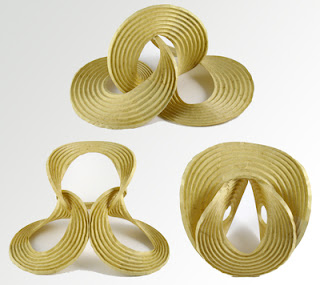YouTube - Tornado-Proof Suburb
A series of hydraulic levers are used to move the housing units in and out of the ground, warping and deflecting the outer skin in response to external stimulation. The mobility also offers the home a chance to aim itself into the prevailing wing to capture maximum breezes or avoid them. Solar cells on the skin rotate and flex to attain maximum solar intensity. A translucent outer skin consisting of clear insulation sandwiched between two layers of Kevlar provides the weather barrier, structure, and diffuse lighting.
Collected from: YouTube - Tornado-Proof Suburb
Proto-Teck :: Indestructible House
The "INDESTRUCTIBLE HOUSE" is in reality a houseboat floating in a large buried concrete silo filled with water. Earth excavated to bury the silo would be back-filled around the upper 1/3 of the silo, forming a berm. The house structure is constructed on a waterproof concrete cylinder, called a barge. The barge will also be a basement for storage and equipment, such as a electric generator in case of a power failure.
Collected from: Proto-Teck :: Indestructible House
Collected from: YouTube - Indestructible House
Collected from: Korvelo
► High-strength solid concrete walls and roofs.
► Bunker like doors.
► Window shutters built with a heavy metal frame and 1/4 steel plate minimum, with the ability to bolt them shut.
Our pyramid is designed for 500 MPH winds minimum, something that only an explosion at close range can create.
F5 tornadoes will top at over 300 MPH, what will destroy most buildings and throw large objects like cars around like missiles. What will damage any building, unless it's designed and built properly.
Even if a super-tornado could potentially push/slide our buildings, they would still be intact and our PYRAMID IS VIRTUALLY IMPOSSIBLE TO TIP REGARDLESS OF THE WIND FORCE .
Collected from: Weather protection | Korvelo
Collected from: Homes | Monolithic
Monolithic Dome Benefits: Survivability
Whether it’s your home, your children’s school or some other structure that you and your loved ones spend time in, nothing beats knowing that you’re in a place that cannot be destroyed by most natural or manmade disasters. That’s the confidence Monolithic Domes offer. They meet or exceed FEMA’s standards for providing near-absolute protection. Monolithic Domes are proven survivors of tornadoes, hurricanes, earthquakes and fires. (Continued…)
Collected from: Benefits | Monolithic
Futuristic Materials Could Build Tornado-Proof Homes | Bradley Quinn | Carbon Fiber | InnovationNewsDaily
″Carbon fiber is incredibly strong and very flexible. The thinking behind carbon fiber architecture is that it can withstand earthquakes. It would be more flexible in the wind than regular structures,″ said Bradley Quinn, author of the new book on advanced materials called ″Design Futures″ (Merrell Publishers, 2011). ″Then there′s the DuPont Storm Room. It′s like a tent made of metal mesh and Kevlar. It can be erected inside and protect the people from all the debris that flies around.″
Kevlar, metal mesh and carbon fibers all provide a flexibility that traditional materials such as wood or concrete simply cannot match. By bending with the wind instead of bending against it, houses constructed from more supple frames have a lower chance of collapse than the more rigid structures build today. There′s a new school of architecture devoted to designing softer buildings that integrate with, rather than resist, nature in both its calm and furious moods, Quinn said.
Collected from: Futuristic Materials Could Build Tornado-Proof Homes | Bradley Quinn | Carbon Fiber | InnovationNewsDaily
Related
























